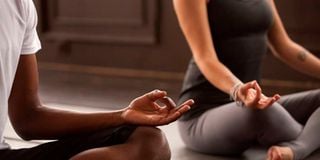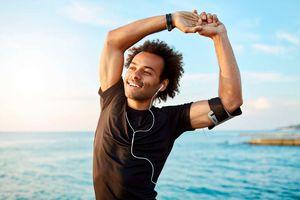Yoga poses to try at home (no equipment needed)

Yoga poses are convenient. They can be done at home and they help improve overall health.
What you need to know:
- As a beginner, yoga might feel overwhelming because of the many yoga poses and their odd-sounding names.
- However, basic yoga poses are easy and do not require you to be flexible or strong. All it takes is a regular practice to reach your goals.
- Go ahead, grab a yoga mat and come try out these poses.
Yoga has been scientifically proven to help people improve their physical health, emotional well-being, and cognitive function.
The poses are designed to stretch muscles and joints in the body that may have become tight or restricted due to stress or injury. Yoga increases flexibility while promoting a healthy balance between muscle strength and flexibility.
What’s more? You can do yoga at home. In this piece, we tell you what poses to try as a beginner. They are easy but challenging enough to give you a good workout. They also require minimal equipment – just a mat and space in your living room or bedroom.
Easy pose
It's one of the most accessible and fun yoga postures. Cross legs while sitting, with the feet on the laps and the back straight and hands resting on the knees and palm up or down. This position relaxes and tones the body, making it robust.
Child pose
The most active posture in any yoga routine, the child position is also known as Balasana. It involves sitting on your knees such that your body is resting on the top of your thighs. Your arms should be stretched outwards, and your forehead lying on the floor.
The child pose aids in the alignment of your back. It releases pain in the back region and helps to relax the mind.
Four limbed staff poses
Keep in mind that the idea of this pose is to straighten your body parallel to the ground. Place your elbows at a right angle along the body and support yourself with your toes and palms. Four limbed staff poses have the following health benefits,
- It maintains core posture and stability by keeping the body properly aligned.
- Strengthen the spinal and abdomen glutes and straighten the spine.
- Strengthens the wrist, upper arms, and shoulders
Corpse pose
This pose relaxes muscles after yoga. To perform this pose:
- Lie flat on your back, arms at the side and legs stretched out apart.
- Close your eyes and breath normally for a few minutes.
- Relax your entire body to enjoy the comfort of relaxation
- Stay for a minimum of 7 minutes or more. Stretch your arms overhead for a full-body stretch.
It has the following benefits
- Relaxes body and mind.
- Relieves muscular tension and tiredness, allowing the body to relax.
- It is effective in reducing anxiety, stress, depression, and insomnia.
- Evens heart rate which distracts menstrual pain in women.
- It can be completed at home before sleeping.
Cow pose
Arch your back and let your stomach dangle down. Raise your head and shoulders away from your ears.
This pose is a great way to relieve upper-body tension, especially in the back, shoulders, and neck. It gently massages the spine to increase flexibility while releasing tension from your upper body. Other benefits include.
- Creates emotional balance
- Relieves stress and anxiety
- Improves coordination
- Strengthens and stretches the glutes, back, and neck of your spine.
- Improves posture and balance
Tree pose
It is one of the few standing poses, also known as Vrikshasana. This posture is unique because it instructs you to examine your relationship with your body.
Some of the benefits are
- Strengthens the ankles, legs, and spine
- Stretches the spine
- Opens the hips
- Improves balance
- Increases focus and concentration
How to do the tree pose
- Start by standing tall with your feet hip-width apart.
- Shift your weight onto your left foot and slowly lift your right foot off the ground, bending your knee and placing the sole of your right foot against the inner thigh of your left leg.
- Hands can be placed on your hips, or you can reach up and interlace your fingers behind your head.
- Keep your core engaged and spine straight as you raise your arms overhead, extending through your fingertips.
- Hold for five deep breaths, slowly release the pose, and switch sides.
Yoga poses are convenient. Spending 15 to 30 minutes a day on these basic poses will improve your yoga practice.



